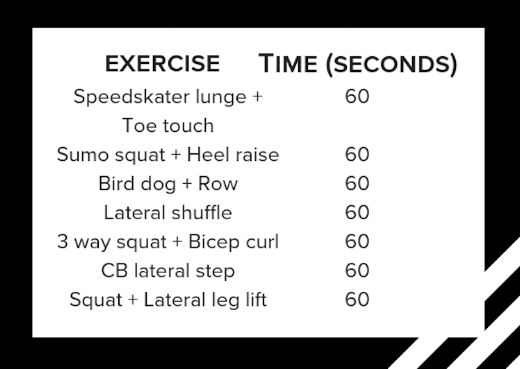Cardio During Pregnancy: Safety Tips and Sample Workouts
Diaries of Cardio Queens Reformed
For an athlete, there is nothing like the feeling of getting that heart rate up and pumping. Of course this isn’t a bad thing, since there are some amazing health benefits to cardio.
Amy and I are big cardio lovers, but prioritizing strength during pregnancy is key because hormones and a growing bump leave your body exposed to a lot of instability (aka muscle weakness). It’s also important to continue doing cardio throughout your pregnancy, but you may need to modify what that looks like. A common question we get is, “What should I do on my cardio days?”
Benefits of Cardio During Pregnancy
Slows and steadies pregnancy weight gain
Improves your mood
Reduces back and hip pain
Increases blood flow response
Increases oxygen delivery to tissues
Calms down sympathetic nervous system (helps decrease stress level)
Burns excess calories (darn you, pregnancy cravings!)
Types of Cardio During Pregnancy
Walking
Treadmill incline workouts
Swimming
Elliptical
Rowing machine
Stationary bike
Low to moderate impact aerobics, which can be done at home with minimal equipment
Running (up until 20ish weeks of pregnancy)
Why can I only run until 20 weeks?
Running is a high impact activity. It requires a tremendous amount of strength — core strength, hip strength, lower extremity strength and proper movement of your upper extremities. It is a continuous single leg stance and the faster you are, the more coordination is required. The movement patterns that are required for running are disturbed during pregnancy due to the growing baby putting pressure on your pelvic floor.
Additionally, throughout pregnancy your body is producing a hormone called relaxin that causes your ligaments to relax so that your pelvis is able to open during delivery. This puts you at increased risk for injuries and discomfort while running during pregnancy, leaving us exposed to problems such as pelvic organ prolapse, stress urinary incontinence, pubic symphysis pain, low back pain, hip pain and diastasis recti.
If it is difficult for you to slow down and cut running out, we have created a blog that specifically talks about running while pregnant. Walking is a great alternative for cardio, especially during pregnancy and postpartum because it is lower impact than running.
Tips for a Safe Cardio Workout During Pregnancy
Regardless of your experience level, all pregnant women should avoid any cardio activity that puts them at risk for a major collision or fall, such as horseback riding, skiing, biking and contact sports
Be sure every workout includes a warmup, cooldown and a few minutes of stretching before and after exercising
Hydrate before, during and after your workout
Listen to your body
Take breaks if needed
NOTE: If you feel dizzy, short of breath or experience vaginal bleeding or pain of any kind, stop exercising immediately and call your doctor if the symptoms don’t go away.
Cardio Intensity During Pregnancy
The 140 BPM Myth and the Talk Test
Years ago, some experts recommended a heart rate of no more than 140 beats per minute when exercising during pregnancy. Today, however, heart rate limits are not the gold standard. Instead, the talk test is used as a guideline during cardio.
This test is easy. Essentially, you should be able to carry on a conversation when exercising while pregnant, meaning that you’re able to speak a couple of sentences without gasping for air.
The image to the right is your perceived rate of exertion. You can use this if you don’t have a heart rate monitor. You should fall somewhere from 4-7. This means your level of activity should still be moderate to vigorous but you should still be able to speak.
Be Intentional During Your Cardio Workouts
Instead of mindlessly jumping on a machine or taking a walk, consider a more intentional workout — like an interval workout. Interval workouts are the perfect way to get your heart rate up. These are workouts where you push hard for a set time, then pull back your intensity for a set time, then go hard again. Below you can find some examples of interval workouts.
Examples of Cardio Workouts for Pregnancy
Treadmill Incline Workout 1
Treadmill Incline Workout 2
Treadmill Incline Workout 3
AT HOME CARDIO- CIRCUIT WORKOUT 1
Performing a circuit workout at home can be done without any equipment. The following circuit is safe prior to 23 weeks but is not diastasis recti safe. Perform each exercise vigorously for the time stated, rest for 20 seconds, then move on to the next one and repeat the circuit three times through.
AT HOME CARDIO- CIRCUIT WORKOUT 2
The following circuit is safe for any time during pregnancy. Perform each exercise vigorously for the time stated, rest for 20 seconds, then move on to the next one and repeat the circuit three times through.
AT HOME CARDIO- CIRCUIT WORKOUT 3
The following circuit is safe for anytime during pregnancy. Perform each exercise vigorously for one minute, rest for 20 seconds, then move on to the next one and repeat the circuit three times through.
CIRCLE BAND WORKOUT
You can do a killer workout with bands. They are such a simple way to add more resistance. There are so many different exercises you can do with them — and they’re easy to do at home or while traveling. This circuit is safe for anytime during pregnancy. Perform each exercise for the time stated (or 12-15x), and repeat the circuit 3-4 times through.









